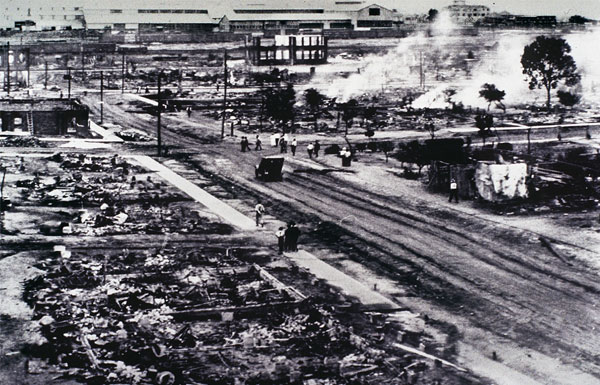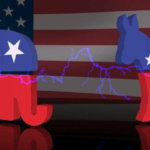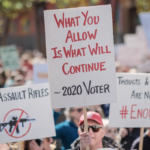
With Black History Month coming to an end, I wanted to bring light to an underreported tragedy. The horrible story of the Tulsa race Massacre was long purposely kept in the dark, and although the 2020 Black Lives Matter protests brought some attention to the issue, the accounts still deserve more recognition.
The story begins in 1921, in Tulsa, Oklahoma, more specifically the neighbourhood of Greenwood. With around 10 thousand inhabitants, Greenwood had a booming economy and was known as ‘America’s Black Wall Street’. Indeed, this neighbourhood was particularly special in its economy as the (very successful) business owners were almost exclusively black. Furthermore, this area was unique in the sense that it was a small bubble in a segregated US. African American citizens were offered “a three-dimensional life”, meaning they could fully and freely take advantage of the many pleasures of life that many white citizens took for granted. Most people were also homeowners. All of this posed a great threat to white supremacists, as Greenwood was the embodiment of “Black success” and the American dream.
The massacre in question started on the 30thof May. Dick Rowland, a young black man got on an elevator where Sarah Page, a white teenager, was the operator. What happened next is uncertain, but Page was heard screaming by witnesses and Rowland was arrested (and later released) for alleged sexual assault. One day later, “an inflammatory report” was published in the local newspaper which sparked a violent confrontation between “black and white mobs”.On the 1stof June, the neighbourhood of Greenwood was savagely “looted and burned by white rioters”.
The outcome? According to the NY Times, “35 blocks burned to the ground; as many as 300 dead; hundreds injured; 8,000 to 10,000 left homeless; more than 1,470 homes burned or looted”. During the looting, the National Guard was called and over 6000 people (the majority being black) were imprisoned – sometimes for as long as 8 days – simply for being present at the scene and trying to defend their families and businesses. Countless Black families were ruined, both materialistically and emotionally and the consequences on the Black Tulsan still linger on today. One might think that the situation could not get more tragic, however, another unfair part of the story is that no one was ever prosecuted for the terrible massacre. The Tulsa council deliberately “ignored and covered up”the events, completely disregarding the victims and their descendants, and denying them their right to justice and closure.
Although these specific events happened between May and June of 1921, the story goes back further. Indeed, the US has undeniably long had a history of racism; even after the ratification of the 13thAmendment to the Constitution in 1865, establishing the abolishment of slavery, the fight for equal rights and recognition did not stop there. The Jim Crow Laws were a series of racist anti-black laws enacted “primarily, but not exclusively in southern and border states, between 1877 and the mid-1960s”. Even though the 13thAmendment should, in theory, have granted equal treatment to African Americans, these laws proved otherwise and black people “were relegated to the status of second class citizens”. All of the unfair treatments towards African Americans, as well as the internalized superiority of white people, backed legally by Jim Crow, reinforced tensions between both sides. Bearing this in mind, it is undeniable this massacre had many layers to it, and although it certainly doesn’t justify what happened, it gives us a relatively clear explanation of why it came to this, as well as why the situation was handled so disrespectfully towards the victims.
Tragically, the 1921 Tulsa Massacre is only one example of the many murderous attacks targeted against African American people. Since its foundation, ‘the oldest democracy’ has always seen unjust treatment towards Black people, from slavery to police violence, with the murders of George Floyd, Breonna Taylor, and many others. Americans have always been proud of their ‘free’ country, but, clearly, things are not always how they seem, and a drastic systemic change is desperately needed.
Image: Aftermath of the Tulsa race massacre, 1921// Unknown Author
Resources
Black History Month
Vox – The massacre of Tulsa’s “Black Wall Street”
BBC News – Tulsa Race Massacre: What happened in 1921?
https://www.bbc.co.uk/news/av/newsbeat-53108682
NY Times – Tulsa Race Massacre
https://www.nytimes.com/interactive/2021/05/24/us/tulsa-race-massacre.html
Tulsa Historical Society and Museum – 1921 Tulsa Race Massacre
Ferris State University – What was Jim Crow
https://www.ferris.edu/jimcrow/what.htm
History – The 13thAmendment
https://www.history.com/topics/black-history/thirteenth-amendment



Average Rating